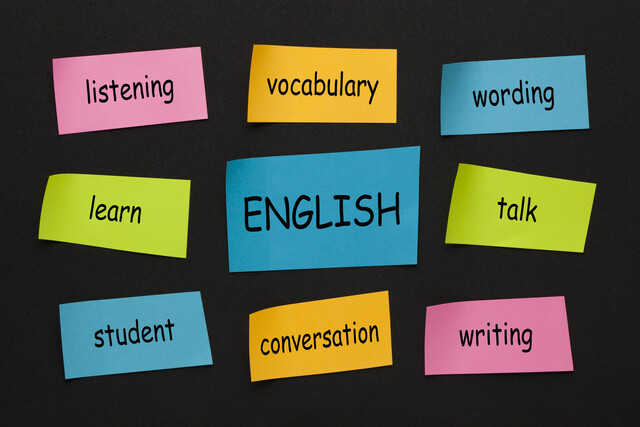Lesson 1. Mastering Grammar: A Guide to Precision in Writing
Punctuation is essential for clarity in writing, as it prevents miscommunication that can arise from misplaced commas and poor grammar. Through structured guidance, this lesson aims to enhance your writing fluency by focusing on grammar and punctuation basics.
Lesson 2. Mastering the Craft of Writing: Elevate Your Skills
Sinclair Lewis's succinct advice underscores the importance of writing as a hands-on skill best developed through practice. By focusing on effective sentence and paragraph construction, the lesson guides writers in avoiding pitfalls that disrupt reading flow.
Lesson 3. Navigating Plural Forms in English
Regular spellings follow rules like adding 's' to plurals, but words ending in 'y' or 'f' introduce special modifications to maintain phonetic harmony. To navigate this maze, remembering key examples and their anomalies is crucial.
Lesson 4. Sentence Refinement Simplified
Master the art of sentence construction to elevate your writing from amateur to professional, by avoiding common pitfalls that disrupt flow and clarity. Mixing short and long sentences with varied structures ensures that your paragraphs are engaging and easy to read.
Lesson 5. Mastering Tricky Spellings: A Comprehensive Guide
Missing a letter or using the wrong homophone can drastically change the meaning of a word, often leading to confusion. This lesson focuses on honing spelling skills for frequently misspelled words using American spellings.
Lesson 6. Organizing Thoughts: The Art of Paragraph Structure
Paragraphs are essential in grouping sentences that develop a single topic and maintaining structure in any narrative, making it easier for readers to grasp the content effectively. A well-crafted paragraph often begins with a topic sentence that introduces the main idea, followed by supporting details, and may conclude with a sentence that reinforces the point.
Lesson 7. Mastering the Plurality of Names, Compounds, and Numbers: A Comprehensive Guide
To create plurals of names with certain endings, add 'es' while avoiding apostrophes, focusing on making compound word plurals by pluralizing the main noun. Numbers and acronyms traditionally just have an 's' added but keep consistency within a chosen style guide.
Lesson 8. Paragraphs Explained
Narrative paragraphs capture readers by unfolding stories with clear chronologies and sensory details, while descriptive paragraphs craft vivid scenes to evoke a sense of presence. Expository paragraphs efficiently convey factual information and explanations, often found in textbooks and manuals for their clarity and detail.
Lesson 9. The Exceptions of 'ie' and 'ei' in English
Master the 'ie' versus 'ei' spelling by recalling a simple rhyme: 'I before E, except after C, or when sounding like A, as in neighbor and weigh,' despite a few exceptions like leisure and mischief. For words ending in -cede, -sede, or -ceed, the key is memorizing the few that defy the norm, as almost all end in -cede.
Lesson 10. Bringing Stories to Life: The Power of Show, Don't Tell in Writing
'Show, don't tell' transforms writing into an immersive experience that captures readers' interest and imagination. By emphasizing active storytelling over passive description, writers elevate their craft and captivate audiences.
Lesson 11. Navigating the Complexity of English Add-ons
Prefixes like il- and im- are added without altering root words, while suffixes require attention to root word endings, such as transforming 'y' to 'i'. Despite the challenges, familiarity and practice help navigate these diverse linguistic alterations.
Lesson 12. Point of View: The Art of Perspective in Storytelling
Third person point of view balances intimacy and breadth, providing insights greater than omniscient yet broader than first person, making it a popular choice for storytelling. This style offers flexibility to shift perspectives between scenes while maintaining narrative depth and clarity.
Lesson 13. Prefixes & Suffixes Explained
The prefix 'sub-' suggests beneath or below, transforming a root into a new concept like 'submarine,' whereas suffixes like '-ness' denote quality, enriching vocabulary as in 'happiness.'
Lesson 14. Dynamic Dialogue Writing
Dialogue serves as a powerful tool to enhance storytelling by showcasing characters' natures and emotions, achieved through thoughtful word choice and minimalistic speaker tags. Avoiding repetitive verbs and overused descriptors ensures conversations remain lively and impactful.
Lesson 15. Homonyms: A Lesson in Language Precision
Writers must be wary of homonyms--words with identical pronunciations but distinct spellings and meanings--to preserve intended sentence clarity. Supplemental review and dictionary references are recommended to differentiate and select the apt spelling absent of sole reliance on spell-check systems.
Lesson 16. Mastering Interior Monologue for Captivating Narratives
Interior monologue offers a powerful means of creating intimacy between characters and readers by revealing the character's inner world. Careful moderation is key, as too much can hinder dialogue and storytelling.
Lesson 17. Subjects & Predicates: The Sentence Foundation
A subject identifies the focus of a sentence and can be a simple noun or pronoun. A predicate complements the subject by detailing an action or providing information about it, often starting with a verb.
Lesson 18. Proportion: Finding the Balance in Your Narrative
The concept of proportion in storytelling is about aligning descriptive detail with narrative importance, allowing readers to engage their imaginations while ensuring the plot progresses smoothly. Flashbacks, technical asides, and manuscript edits should be employed strategically to maintain story balance and momentum.
Lesson 19. The Art of Verb Tenses: Conveying Time in Writing
This lesson delves into the intricacies of verb tenses, including present, past, and future tenses, and their subcategories like simple, progressive, perfect, and perfect progressive. Special attention is given to irregular verbs, which defy the typical rules of tense formation, with examples provided to enhance understanding.
Lesson 20. Cultivating Writing Sophistication: An Advanced Guide
Learning advanced stylistic techniques and maintaining consistent style can elevate writing beyond amateur levels, giving it polish and professionalism. Avoiding cliches and unnecessary adverbs contributes to stronger, more impactful writing.
Lesson 21. The Essential Role of Nouns and Pronouns in Sentences
Using nouns to label entities in the world, language evolves by enabling pronouns to take their place, streamlining communication while requiring strict adherence to grammatical rules, such as pronoun agreement and case. Effective writing demands clarity of pronoun references and the correct usage between 'who' and 'whom' based on their function as subject or object.
Lesson 22. Refining Your Words: The Art of Concise Expression
Though writers strive for sophistication, overcomplicated language can hinder communication instead of enhancing it. Simplifying to more direct phrases, such as using 'concluded' instead of 'arrived at the conclusion,' can enhance both clarity and elegance.
Lesson 23. Adjectives Explained
Adjectives are essential for specifying nouns and pronouns, often used in participle form to add depth, whereas adverbs provide clarity to verbs, adjectives, and other adverbs by addressing questions of manner, timing, or frequency. Comparative language relies on the correct use of positive, comparative, and superlative forms to convey varying degrees of qualities.
Lesson 24. Write, Revise, Repeat: A Deep Dive into Self-Editing
Proofreading transcends mere spell checks by requiring human discernment to catch context-sensitive errors and improve sentence flow. Revising involves refining these elements, ensuring the document meets its intended purpose and resonates with audiences.
Lesson 25. Unpacking the Role of Prepositions
Prepositional phrases, consisting of a preposition and a noun or pronoun, act as adjectives or adverbs within sentences and offer descriptive detail. By altering the preposition, the relationship and meaning can change, but clarity is essential, avoiding unnecessarily wordy constructions.

72 Hours average completion time
7.2 CEUs
39 Lessons
232 Articles
Mobile Friendly
Last Updated December 2025
























